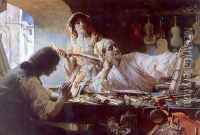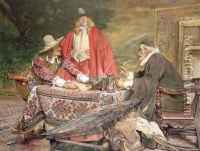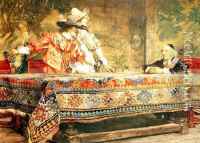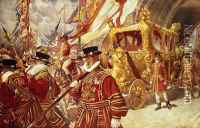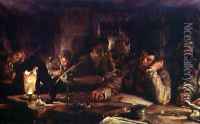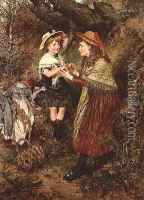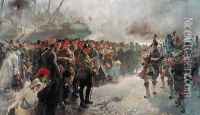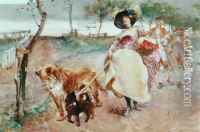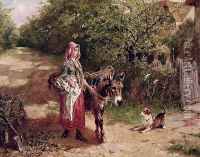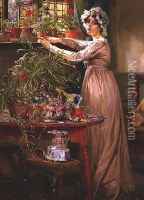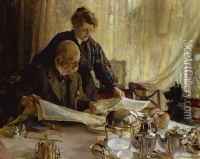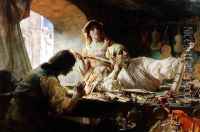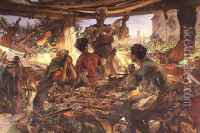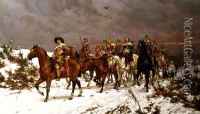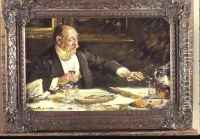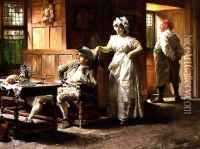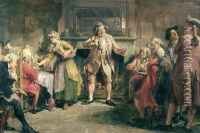Edgar Bundy Paintings
Edgar Bundy was an English painter, born in Brighton, Sussex on 29 October 1862. Although Bundy did not receive any formal training in art, he developed his skills through an apprenticeship with a church decorator, which provided him with a foundation in designing and creating decorative motifs. This early experience also influenced his later work, which often incorporated historical and genre subjects with a particular focus on meticulously crafted detail and an affinity for period costume.
Bundy became known for his historical genre paintings, which were characterized by their narrative quality and attention to historical accuracy. He was particularly interested in the 17th and 18th centuries and often depicted scenes from English and European history with a dramatic flair. His approach was traditional, and he was associated with the Newlyn School of painters, which included artists such as Stanhope Forbes and Frank Bramley. These painters were known for their realist works and were part of the larger movement of British artists who moved away from the cities to rural communities.
Throughout his career, Bundy exhibited at various prestigious venues, including the Royal Academy of Arts in London. His works were well-received, and he gained a reputation for his elaborate historical scenes. Bundy was also a member of the Royal Institute of Oil Painters, a reflection of his expertise and standing in the art community.
Unfortunately, Bundy's work fell out of favor with the advent of modernism, which shifted the public's taste away from the detailed historical narratives that he so skillfully depicted. Despite this, his paintings remain a testament to his technical skill and his love of history, and they continue to be of interest to collectors who appreciate Victorian genre painting.
Edgar Bundy passed away on 17 June 1922 in London. His legacy is preserved in the collections of various museums and galleries, where his work can be viewed and studied by those interested in the art and history of the period he so vividly captured in his paintings.
